Shama Lama Ding Dong Otis Day and the Knights
"Shama Lama Ding Dong" is a song written by Mark Davis and performed by fictional band Otis Day and the Knights in the 1978 film National Lampoon's Animal House. Although Otis Day was portrayed by DeWayne Jessie in the film, the lead vocals were actually performed by Lloyd G. Williams, with backing vocals provided by Melvin Britt and Sidney Juston.
A version of the song, by beach music group Band of Oz, won People's Choice Song of the Year at the 1995 Carolina Beach Music Awards. It was also covered by John Mellencamp as the B-side of his 1987 single "Cherry Bomb."
The song was included on two albums by the University of California Men's Octet. It has also been performed and recorded by the Dartmouth Aires at Dartmouth College, the school on which Animal House was modeled.
National Lampoon was started by Harvard graduates and Harvard Lampoon alumni Doug Kenney, Henry Beard and Robert Hoffman in 1969, when they first licensed the "Lampoon" name for a monthly national publication. The Harvard Lampoon was established in 1876 and became a long-standing tradition of the campus, influencing the later National Lampoon Brand in its evolution from illustration-heavy publications to satirical wit, ranging from short fiction to comic strips. The magazine's first issue was dated April 1970 and went on sale on March 19, 1970. The company that owned the magazine was called Twenty First Century Communications.
After a shaky start for a few issues, the magazine rapidly grew in popularity. Like The Harvard Lampoon, individual issues had themes, including such topics as "The Future," "Back to School," "Death," "Self-Indulgence," and "Blight." The magazine regularly reprinted material in "best-of" omnibus collections. Its writers joyfully targeted every kind of phoniness, and had no specific political stance, even though individual staff members had strong political views.
Thomas Carney, writing in New Times, traced the history and style of the National Lampoon and the impact it had on comedy's new wave. "The National Lampoon," Carney wrote, "was the first full-blown appearance of non-Jewish humor in years—not anti-Semitic, just non-Jewish. Its roots were W.A.S.P. and Irish Catholic, with a weird strain of Canadian detachment. . . . This was not Jewish street-smart humor as a defense mechanism; this was slash-and-burn stuff that alternated in pitch but moved very much on the offensive. It was always disrespect everything, mostly yourself, a sort of reverse deism."
National Lampoon was an American humor magazine that ran from 1970 to 1998. The magazine started out as a spinoff from the Harvard Lampoon. National Lampoon magazine reached its height of popularity and critical acclaim during the 1970s, when it had a far-reaching effect on American humor and comedy. The magazine spawned films, radio, live theater, various sound recordings, and print products including books. Many members of the creative staff from the magazine subsequently went on to contribute creatively to successful media of all types.
During the magazine's most successful years, parody of every kind was a mainstay; surrealist content was also central to its appeal. Almost all the issues included long text pieces, shorter written pieces, a section of actual news items (dubbed "True Facts"), cartoons and comic strips. Most issues also included "Foto Funnies" or fumetti, which often featured nudity. The result was an unusual mix of intelligent, cutting-edge wit, combined with some crass, bawdy jesting. In both cases, National Lampoon humor often pushed far beyond the boundaries of what was generally considered appropriate and acceptable. It was especially anarchic, satirically attacking what was considered holy and sacred. As co-founder Henry Beard described the experience years later: "There was this big door that said, 'Thou shalt not.' We touched it, and it fell off its hinges." The magazine declined during the late 1980s and ceased publication in 1998.
National Lampoon was a monthly magazine for most of its publication history. Numerous "special editions" were also published and sold simultaneously on newsstands. Some of the special editions were anthologies of reprinted material; others were entirely original. Additional projects included a calendar, a songbook, a collection of transfer designs for T-shirts, and a number of books. The magazine sold yellow binders with the Lampoon logo, designed to store a year's worth of issues.
The original art directors were cartoonist Peter Bramley and Bill Skurski, founders of New York's Cloud Studio, an alternative-culture outfit known at the time for its eclectic style. Bramley created the Lampoon's first cover and induced successful cartoonists Arnold Roth and Gahan Wilson to become regular contributors.
Beginning with the eighth issue, the art direction of the magazine was taken over by Michael C. Gross, who directed the look of the magazine until 1974. A number of the National Lampoon's most acerbic and humorous covers were designed or overseen by Gross, including:
Court-martialed Vietnam War mass-murderer William Calley sporting the guileless grin of Alfred E. Neuman, complete with the parody catchphrase 'What, My Lai?" (August 1971)
The iconic Argentinian revolutionary Che Guevara being splattered with a cream pie (January 1972)
A dog looking worriedly at a revolver pressed to its head, with what became a famous caption: "If You Don't Buy This Magazine, We'll Kill This Dog" (January 1973)
The cover was conceived by writer Ed Bluestone. Photographer Ronald G. Harris initially had a hard time making the dog's plight appear humorous instead of pathetic. The solution was to cock the revolver; the clicking sound caused the dog's eyes to shift into the position shown. This was the most famous Lampoon cover gag, and it was selected by ASME as the seventh-greatest magazine cover of the last 40 years. This issue is among the most coveted and collectible of all the National Lampoon's issues.
A replica of the starving child from the cover of George Harrison's charity album The Concert for Bangladesh, rendered in chocolate and with a large bite taken out of its head (July 1974)
Michael Gross and Doug Kenney chose a young designer from Esquire named Peter Kleinman to succeed the team of Gross and David Kaestle. During his Lampoon tenure, Kleinman was also the art director of Heavy Metal magazine, published by the same company. The best known of Kleinman's Lampoon covers were "Stevie Wonder with 3-D Glasses" painted by Sol Korby, a photographed "Nose to The Grindstone" cover depicting a man's face being pressed against a spinning grinder wheel for the Work issue, the "JFK's First 6000 Days" issue featuring a portrait of an old John F. Kennedy, the "Fat Elvis" cover which appeared a year before Elvis Presley died, and many of the Mara McAfee covers done in a classic Norman Rockwell style. Kleinman designed the logos for Animal House and Heavy Metal. Kleinman left in 1979 to open an ad agency.
He was succeeded by Skip Johnson, the designer responsible for the Sunday Newspaper Parody and the "Arab Getting Punched in the Face" cover of the Revenge issue. Johnson went on to The New York Times. He was followed by Michael Grossman, who changed the logo and style of the magazine.
In 1984, Kleinman returned as creative director and went back to the 1970s logo and style, bringing back many of the artists and writers from the magazine's heyday. He left four years later to pursue a career in corporate marketing. At that time, the National Lampoon magazine entered a period of precipitous decline.
The magazine was an outlet for some notable writing talents, including Douglas Kenney, Henry Beard, George W. S. Trow, Chris Miller, P. J. O'Rourke, Michael O'Donoghue, Anne Beatts, Chris Rush, Sean Kelly, Tony Hendra, Brian McConnachie, Gerald Sussman, Derek Pell, Ellis Weiner, Ted Mann, Chris Cluess, Al Jean, Mike Reiss, Jeff Greenfield, John Hughes and Ed Subitzky.
The work of many important cartoonists, photographers, and illustrators appeared in the magazine's pages, including Neal Adams, Gahan Wilson, Robert Grossman, Michael Sullivan, Ron Barrett, Peter Bramley, Vaughn Bode, Bruce McCall, Rick Meyerowitz, Ralph Reese, Warren Sattler, M. K. Brown, Shary Flenniken, Bobby London, Edward Gorey, Jeff Jones, Joe Orlando, Arnold Roth, Rich Grote, Ed Subitzky, Mara McAfee, Sam Gross, Charles Rodrigues, Buddy Hickerson, B. K. Taylor, Birney Lettick, Frank Frazetta, Boris Vallejo, Marvin Mattelson, Stan Mack, Chris Callis, John E. Barrett, Raymond Kursar, Andy Lackow, and David C.K. McClelland.
Comedy stars John Belushi, Chevy Chase, Gilda Radner, Bill Murray, Brian Doyle Murray, Harold Ramis, and Richard Belzer first gained national attention for their performances in the National Lampoon's stage show and radio show. The first three subsequently went on to become part of Saturday Night Live's original cast of Not Ready for Primetime Players, Bill Murray replaced Chase when Chase left SNL after the first season, and Brian Doyle Murray later appeared as an SNL regular. Harold Ramis went on to star in the Canadian sketch show SCTV and assumed role as its head writer, then left after season 1 to be a prolific director, writer and actor, working on such films as Animal House, Caddyshack, Ghostbusters, Groundhog Day and many more. Brian Doyle Murray has had roles in dozens of films, and Belzer was an Emmy Award-winning TV actor.
Gerald L. "Jerry" Taylor was the publisher, followed by William T. Lippe. The business side of the magazine was controlled by Matty Simmons, who was chairman of the board and CEO of Twenty First Century Communications, a publishing company.
Sounds foxy to me...
National Lampoon's Animal House
In 1978, National Lampoon's Animal House was released. Made on a small budget, it did phenomenally well at the box office. In 2001, the United States Library of Congress considered the film "culturally significant" and preserved it in the National Film Registry.
The script had its origins in a series of short stories that had been previously published in the magazine. These included Chris Miller's "Night of the Seven Fires", which dramatized a fraternity initiation and included the characters Pinto and Otter, which contained prose versions of the toga party, the "road trip", and the dead horse incident. Another source was Doug Kenney's "First Lay Comics", which included the angel and devil scene and the grocery-cart affair. According to the authors, most of these elements were based on real incidents.
The film was of great cultural significance to its time, as The New York Times describes the magazine's 1970s period as "Hedonism in full sway and political correctness in its infancy." Animal House, as the article describes was a crucial film manifestation of that culture.
An article from The Atlantic Monthly describes how Animal House captures the struggle between "elitist {fraternity} who willingly aligned itself with the establishment, and the kind full of kooks who refused to be tamed." That concept was a crucial figment of the early National Lampoon Magazine, according to a New York Times article concerning the early years of the Magazine and co-founder Douglas Kenney's brand of comedy as a "liberating response to a rigid and hypocritical culture."
-
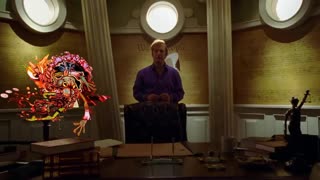 1:14:30
1:14:30
Psychological operations
9 days agoThe Bar And The God Stone Of Jacob's Pillow
134 -
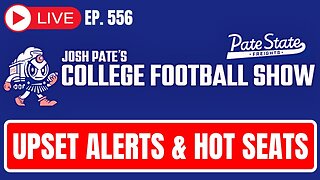 58:17
58:17
Josh Pate's College Football Show
5 hours agoWeek 4 Upset Alerts | Florida & Billy Napier Future | Biggest Vegas Movement | Cole Cubelic Joins
33.2K3 -
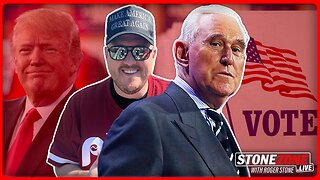 1:00:00
1:00:00
The StoneZONE with Roger Stone
6 hours agoPennsylvania is the Key to Trump Victory - w/ Cliff Maloney of the PA Chase | The StoneZONE
50.1K9 -
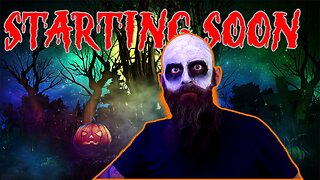 LIVE
LIVE
Tundra Gaming Live
12 hours agoThe Worlds Worst Horror Streamer Has Heart Attack Playing Phasmophobia
359 watching -
 6:33:42
6:33:42
MissesMaam
9 hours agoManager Ma'am 💚✨
64.2K4 -
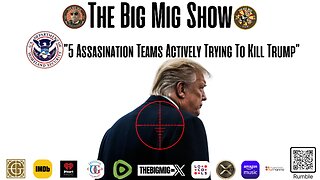 1:48:05
1:48:05
The Big Mig™
7 hours agoDHS -”5 Assassination Teams Actively Trying To Kill Trump”
86.2K17 -
 58:33
58:33
The Body Language Guy
8 hours agoTrump BREAKS the internet, Kamala DROPS, Newsom BANS MEMES and MOAR!
58K47 -
 49:15
49:15
VIVA TV
10 hours agoHank and Chaps Tee It Up in a Dartboard Rematch Presented by Fireball
44.7K1 -
 46:18
46:18
Kimberly Guilfoyle
12 hours agoFed up: it’s time for answers, live with Pat Brosnan, Steve Moore & Karoline Leavitt | Ep. 159
60.8K44 -
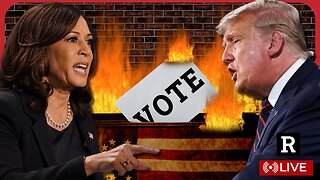 1:03:41
1:03:41
Redacted News
9 hours agoDeep State PREPARING You For Election Night Turmoil, Fed just admitted the truth | Redacted News
130K466